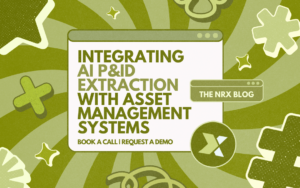According to Deloitte, asset-intensive industries lose up to 20% of their productive capacity due to unplanned downtime each year. This substantial loss underscores the urgent need for smarter maintenance strategies. Risk-Based Inspection (RBI), which prioritizes inspections based on asset criticality, has become vital for optimizing maintenance schedules and reducing the likelihood of catastrophic failures.

What is Risk-Based Inspection?
Risk-Based Inspection is a methodology used to prioritize inspection efforts by evaluating both the probability of equipment failure and its potential consequences. Instead of applying the same inspection frequency across all assets, RBI directs attention to the equipment that presents the highest risk to safety or the environment.
This approach is recommended by standards such as API 580. It allows teams to concentrate limited resources on areas where they can make the most impact.
Understanding Criticality
Criticality refers to how important an asset is based on the potential consequences of its failure. In the context of RBI, two types of criticality are essential: asset criticality and failure criticality. Asset criticality measures the overall importance of equipment within a system. Factors include safety, regulatory compliance, production loss, and environmental damage. On the other hand, failure criticality evaluates the severity of specific failure modes. This helps organizations understand the potential impact of individual malfunctions.
Prioritization through Criticality: A Strategic Imperative
Criticality scoring helps organizations schedule inspections more effectively. Assets that are deemed safety critical receive more frequent and detailed inspections. In contrast, non-critical items may be scheduled for longer intervals or monitored with simpler techniques. For instance, a heat exchanger in a chemical processing plant may be considered safety-critical due to the risk of a toxic leak if it fails. Meanwhile, a small utility pump might pose minimal risk and therefore need less attention.
This kind of prioritization is often embedded into EAM systems such as IBM Maximo or SAP Plant Maintenance. Functional locations, preventive maintenance routines, and inspection plans are all informed by criticality data.

Illustrating Criticality in a Food Processing Facility
Imagine a food processing facility using a CMMS to manage inspections. After implementing an RBI program, the maintenance team evaluates the criticality of key assets. They identify a steam boiler and a refrigeration compressor as high-criticality assets due to safety and product spoilage concerns.
As a result, the boiler is scheduled for quarterly ultrasonic thickness inspections. The refrigeration compressor is fitted with condition monitoring sensors to track real-time performance. Conversely, non-safety critical conveyor belts receive visual inspections once a year. This shift allows the facility to reallocate resources to higher-risk areas, which reduces downtime and improves compliance.
Aligning RBI with Digitalization
Digitalization helps organizations optimize RBI programs by using real-time data to update risk models. Migrating to systems that include digital twins enhances this capability even more. These digital twins provide simulations of asset behaviour and degradation, which improves the accuracy of criticality scoring.
This dynamic capability is particularly useful in industries where safety-critical conditions evolve quickly. It ensures inspection resources are focused on assets with the highest current risk, not just historical priorities.
The Interplay of Criticality and Inspection Technology
Advanced inspection techniques such as phased array ultrasonic testing or radiography are often reserved for safety-critical assets. The selection of these methods is guided by criticality assessments. In addition, EAM platforms enable users to assign specific inspection strategies to assets based on their assigned criticality level.
Conclusion
Criticality is a foundation of effective Risk-Based Inspection. By understanding the consequences and likelihood of failure, organizations can make informed decisions about where to focus their inspection efforts. With digitalization and the migration to different platforms, these decisions are becoming more dynamic and data-driven. As a result, safety-critical equipment is better maintained, risks are reduced, and compliance is easier to achieve.
Integrating AI P&ID Extraction with Asset Management Systems
ISO 14224 vs Other Maintenance Standards: What Sets It Apart?
Building Trust in Your Asset Data: Strategies for Governance
Share this article




